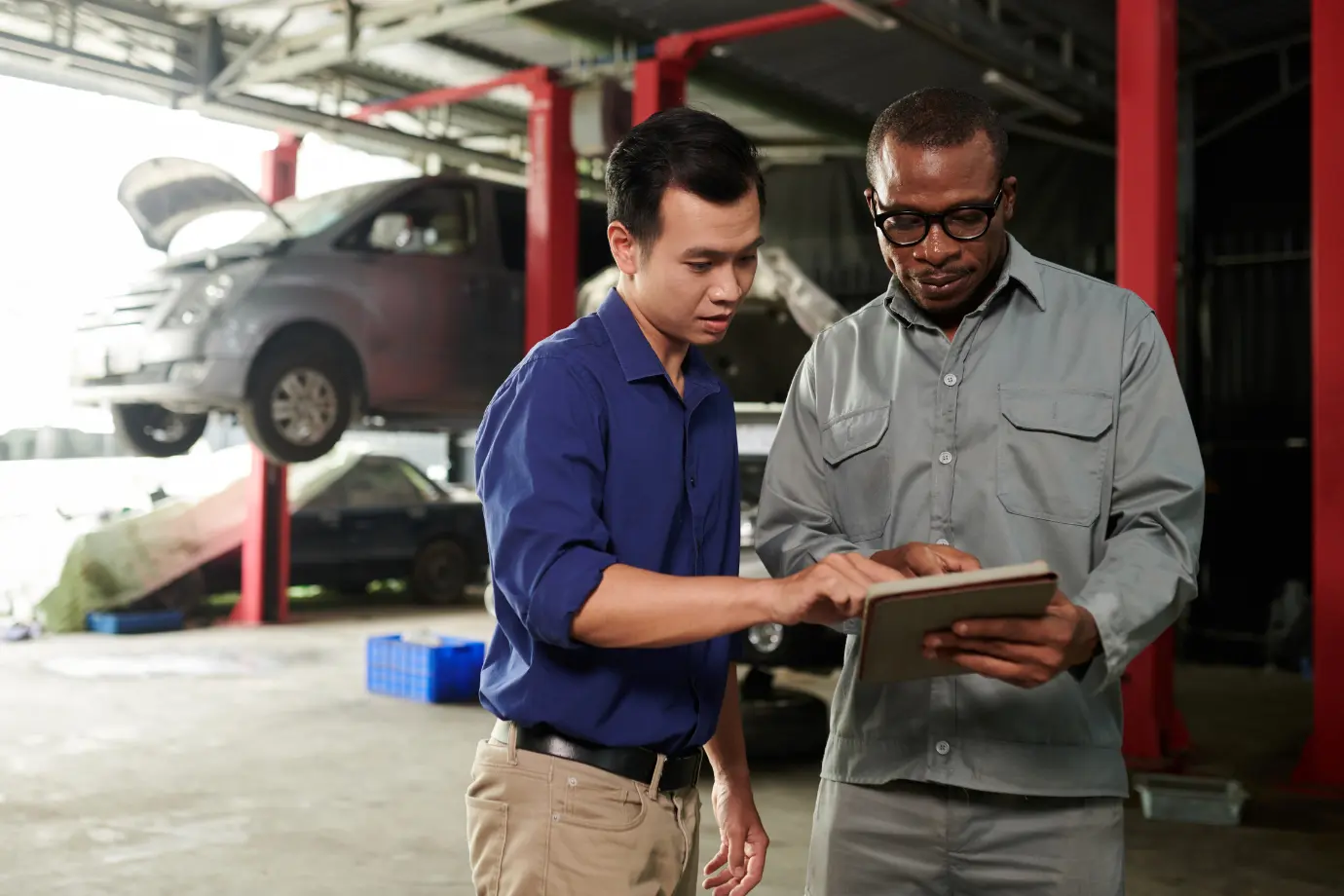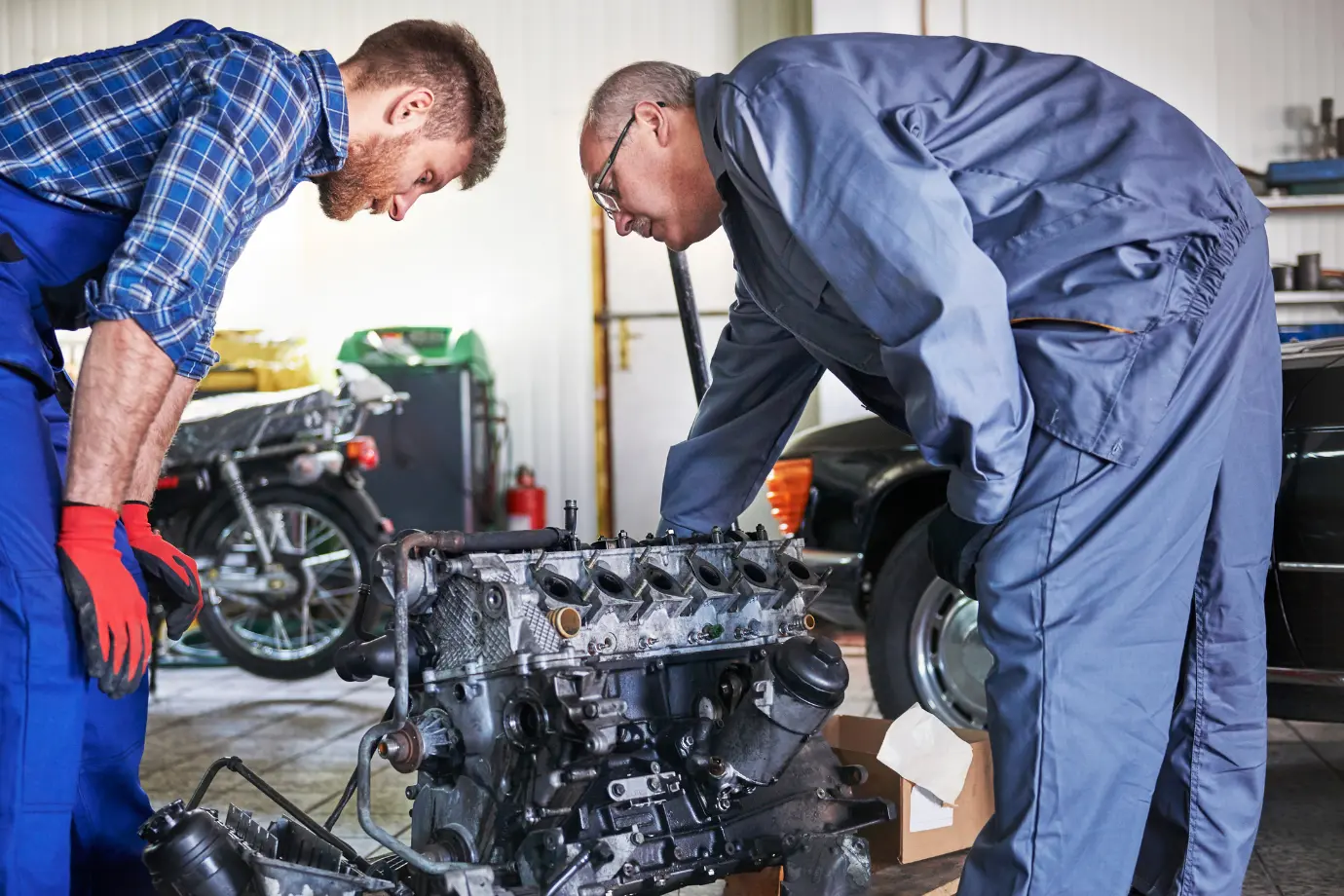
Introduction
The automotive aftermarket has experienced disruptions in almost every decade. It all started with the advent of motor engines back in the 1900s. The recent transformations in the automotive industry have led to various disruptions including the advancement in electric and sustainable vehicles, and autonomous vehicles. All of these together have reshaped how we perceive mobility as a whole. The aftermarket industry faces boundless challenges and opportunities.
The traditional methods of managing aftermarket activities have now been outdated. Manual tasks have been redefined with the help of automation and the introduction of chatbots and virtual assistants has also led to multiple tasks being streamlined.
Change is inevitable and also brings new opportunities. Industries have to embrace innovation, collaboration and a forward-thinking mindset. These would help automotive aftermarket companies navigate the challenges and opportunities that tomorrow brings. In this blog, we will discuss what will be the aftermarket industry like in 2023 and beyond.
Now let us discuss the 7 key trends that will shape the automotive aftermarket industry in 2030 and beyond.
Digitalization of Sales Channels & Interfaces
The automotive industry joined the digital bandwagon a bit late and it only got accelerated courtesy pandemic in 2020. Each stakeholder is now fast establishing its online channel as more and more customers log online to make their decision to purchase. In the process, Digitalization has reduced information asymmetry and increased price transparency of Aftermarket parts.
Digitalization of sales channels won’t always be restricted to the meaning of setting up B2B websites.
Workshops today turn to traditional channels to buy car parts with up to 90% of all purchases happening through the legacy ordering systems set up by OEMs & distributors. With digitally aggressive new entrants like Go Mechanic jumping into the value system, workshops are expected to increase their parts purchases on independent B2B platforms and less via traditional channels.
These B2B platforms may also give way to B2C multi-brand e-commerce platforms (offered by Boodmo & Amazon), providing the customer's freedom to purchase parts directly. Thereby affecting the bottom lines of OEM & its Authorized Service Centers.
Big Data & Analytics – A New Source of Value Generation
Connected vehicles today are capable of generating up to 25 GB of data per hour - including the collection of telematics information and driver’s driving behaviour data. Combined with the right analytics capabilities, this data can open doors to insights that can be used to offer differentiated services, segmented at individual owner’s level.
Based on such precise predictions, workshops, parts distributors suppliers, and OEMs can optimize their inventory and logistics. As the complexity in the product mix increases with EVs getting added to the portfolio, the cost of land and fuel increase by the day and customers become more aware and demanding thanks to digitalization, big data and analytics can help save aftermarket players millions of rupees and in return give the customer a priceless experience.
OEMs and Tier-1 suppliers are in an advantageous position having years of such data. But unfortunately, they are not sufficiently prepared to take advantage of this. And those who are ramping up are not equipped enough.
Increasing Importance of Shared Mobility
The concept of shared mobility has widened from the cab rental service offered by Ola & Uber to include Professionally Managed Fleet services (like WTI & Carzonrent), Self-Drive Options (Zoomcar & Revv) and Car Subscription services (Myles & Mychoize).
The current uptake of shared mobility could mean that nearly one out of ten cars sold in 2030 will be a shared vehicle.
Utilization would be the key to the bottom line of mobility providers thereby giving “downtime” or “Vehicle Off-Road” a new importance for aftermarket players. As the share of business customers grows, service management will become more centralized. Together, these developments would bring about new needs, such as professionalized genuine parts purchasing processes and service operations.
The challenge here would lie in developing advanced aftermarket concepts ensuring high utilization and competitive Cost of Ownership structure.
Rise of Sales in Tier-1 & Tier-2 Cities
As per the Federation of Automobile Dealers Associations (FADA), rural sales now contribute 40% to the overall automotive sales in India. In the replacement car market, the share of the rural market increases to 55% which is expected to grow up to 70% in the forthcoming years.
Consumers living outside metros are extensively using the internet as a bridge to their aspirations. However, the lack of physical service centres is hampering their ownership experience. Adding to the woes is the availability of non-genuine cheap parts that get sold unchecked by local garages resulting in further deterioration of the driving experience.
Also since these points of sales are far off from the regional and area offices, customer engagement and retention remain a challenge. Industry players hoping to rise to the occasion will need to adapt their approach to product, sales & retention.
New Technical Competencies
As the percentage of EVs increases on the road, Participation in its value chain will require new capabilities to match new car components (eg: battery & electrical engine).
EV would require an electrical engineering and computer diagnostic skill set which does not map well with traditional mechanics systems. The legacy model of dealer-based service centres will fade and a new field-based service model will find its way as customers will demand on-the-spot problem rectification in the form of remote diagnostics and virtual repair support. The luxury of repair by the roadside independent workshops would not be available to EV customers.
OEMs and Tier 1 suppliers would have to invest in newer technology and manpower that could help them move closer to customers. As combustion engines would continue to dominate business, the right mix of strategy for material and manpower would need to be put in place to secure the future and market share.
Increasing Importance of Software & Sensors
A modern high-end car already has up to 100 million lines of code making software capabilities in the aftermarket increasingly important.
By 2030 software expertise will be one of the core competencies for the aftermarket stakeholders. Conventional, only mechanics-based workshops may no longer have a place in the aftermarket ecosystem – for both Electric and IC engine-based Vehicles.
Complete automation may still be far off, but volumes of cars with advanced driver assistance (ADAS) features would likely grow. Increased focus of the Government on road safety would further increase the penetration of software and sensors in cars that would reduce (if not eliminate) the human element of driving.
This will not only impact the direct aftermarket players (eg: body shops) but also intermediaries such as insurance companies will need to modify their business models.
Shift in Profit Pools
There will be a mix of threats and opportunities for existing stakeholders and plenty of points of entry for new players from other industries and newly created start-ups in the run-up to 2030. With cars becoming a platform for software and applications, profits might even shift to tech giants or new software entrants who would now be placed at the beginning of the value chain.
With the increasing popularity of B2B and B2C platforms, the bottom line of OEMs and authorized service centres would be impacted. However, they would have a chance of redemption by usage of data generated from the car if they chose to collect and analyze it effectively.
Since electric engines have fewer moving parts and, thus, less wear and tear. Overall, aftermarket maintenance costs for battery electric vehicles are expected to be approximately 40 per cent lower than for conventional combustion engine vehicles. Thus resulting in the shrinkage of profit pools across stakeholders.
Conclusion
While the road ahead may be filled with challenges and uncertainties, it also presents boundless opportunities for those willing to embrace change and adapt to the evolving needs of consumers and the automotive industry at large. Whether it's investing in new technologies, forging strategic partnerships, or reimagining business models, stakeholders across the aftermarket value chain have the opportunity to drive innovation and shape the future of mobility.
As we look towards 2030 and beyond, one thing remains clear: the aftermarket industry's ability to thrive in this rapidly changing landscape will depend on its ability to anticipate and respond to emerging trends, harness the power of technology, and prioritize sustainability and customer-centricity.
Learn more about our aftermarket software offerings. Write to us at sales@intellinetsystem.com.
Explore More Insights
About the Author
Chandra Shekhar
Chandra Shekhar is the Senior Manager, Strategy & Business Development at Intellinet Systems. With over a decade of experience in the automotive industry, Chandra Shekhar has led digital transformation and aftersales strategy initiatives for OEMs across multiple markets. His background combines deep industry knowledge with a practical understanding of how technology can solve real operational challenges. He focuses on making complex ideas clear and relevant for automotive and aftermarket professionals navigating ongoing change.



























